Virå Bruks history
In the 17th century, Sweden was at war for long periods and cannons were used in the war. Wirå had large forests that were important in the production of iron. As early as 1638, Wirå received a letter of privilege for iron production from Queen Kristina. The main product produced was bar iron and in addition to the availability of forest, the availability of water was also important. The forest was needed to produce coal, which in turn was used to heat pig iron during processing into bar iron. The water was used to power the hammers, which had the task of driving away slag products from the iron.
At the beginning of the 19th century, Wirå was one of the larger ironworks in Sörmland. In 1860, Per August Enhörning bought Wirå and built up a working environment with a school, dairy, general store, new barn, poorhouse and new sawmill. The majority of the buildings still exist today, albeit with other uses. He also laid out a park with gravel paths for walking. It is said that Per August Enhörning, who did not live at Virå but at Stavsjö Bruk, decided that the gravel paths on both sides of Virån, every Friday, should be raked as far as you could see from the man farm building.
20th century
The glory period was relatively short-lived. As early as 1899, rebar production basically ceased. At the turn of the century, Virå was hit by the nun butterfly, which destroyed 1,000 hectares of the farm’s forest over the course of four years. The butterfly got its name from the black and white color, similar to a nun’s dress. A railway – the Nunnebanan – was built to transport timber between Virå and Bråviken.
Ernst Johansson, great-grandfather of the current owner, bought Virå in 1924. When the current owner Caesar Åfors took over the farm in 1986, six people were employed in forestry. Today there is only one part-time employee in the forest, but instead around ten full-time employees and around ten hourly employees in the experience industry that has developed on the farm. The property of 2200 hectares consists mostly of coniferous forests. With its active management, Virå has one of Sweden’s finest red deer populations. On the grounds there are also fallow deer, roe deer, moose and wild boar.
Contemporary history
Contemporary history includes that Virå Bruk built Sweden’s first shooing cinema in 2010. The shooting range was the starting point for the farm’s ongoing development to become an enterprising farm that provides local jobs and recreates the hustle and bustle that once existed at the old mill.
In 2012, the huntingshop was inaugurated and in December of the same year the restaurant was built, a professional kitchen with six mobile kitchen islands in the dining room for cooking activities with a focus on game meat and other raw materials from the forest pantry. At the same time, an investment in conferences was launched.
In 2013, the sale of hunts for both ungulate and birds was commercialized with high quality thinking in convivial ways in beautiful environments.
In May 2014, Virå Sporting was inaugurated – a venture into shotgun shooting with two Compact Sporting courses and a Driven course. In the same year, the hunting camp (jaktcampen) was rebuilt with new, fresh rooms and bathrooms as well as a larger hunting lodge with a glass veranda with a lake view for pleasant dinners. The conference rooms Stallet and Smedjan were also renewed. In addition, huntingshop´s range was expanded in new premises and a cast armory when the Shooting Cinema and the insertion tunnels were built together into one unit.
A new approved game handling facility was built in 2017 to make better and more efficient use of the farm’s game, which is mainly served in the restaurant. In the same year, the driving range was moved to its current location and supplemented with more towers and throwers.
In 2018, the premises in the restaurant were expanded with a serving corridor and wine room, and in the spring the meeting/dining room Kvarnen was inaugurated, which provided additional opportunities for conferences, parties and weddings with slightly larger groups.
Over the years, several residences have been purchased for the business, Åmundstorp in 2011 which was rebuilt in 2015, and received more rooms in 2017. Källstugan was purchased in 2022 and after renovations will begin to be rented out from 2023.
In 2020, the hunting shop was expanded with another gun room, large warehouse, office space and a larger shop for the sale of hunting and outdoor clothing and equipment.
In 2022, an outbuilding was renovated with new stables and several new horse paddocks mean that the land closest to the farm is now grazed and kept open.
To complement the mill’s hydropower stations and solar panels, a solar park located on a high hill was built in 2022 and put into operation in 2023.

